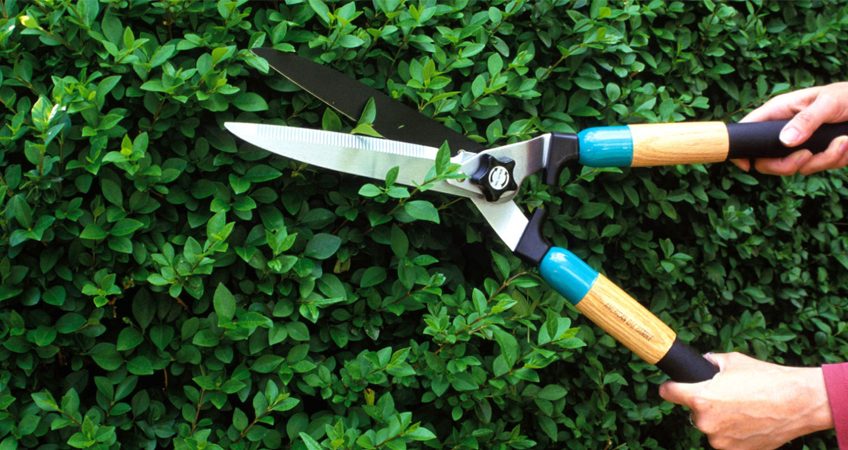Extreme caution and safety should be practiced in pruning trees and, often, it is more wisely done by an experienced, professional tree surgeon. Always beware of power lines nearby or actually resting in tree limbs. Notify electric company personnel immediately of any downed wires or branches lying on the wires—DO NOT try to correct the trouble yourself!
Because pruning stimulates growth, it is best done in early spring since wounds heal rapidly if made in the early part of the growing season. Avoid pruning in freezing weather. An ideal tree form is a strong, straight trunk and a strong, natural branching structure. Do not allow the tree to develop with two or more main trunks, as this will weaken each trunk. In all trees, a strong central leader is preferred. If two trunks are developing in a young tree, select the stronger upright branch and cut any rivals back. This will create a chosen leader, which will develop as a central leader. Lower branches should be pruned above head height in pedestrian areas. When trees are meant for windbreaks or screens, allow them to branch very low and more thickly. Prune flowering trees after they have bloomed. IF a tree is damaged by lightning or wind, a tree surgeon can best determine if it is salvageable or how it can best be re-shaped.
Quick action often will save a partly or wholly uprooted tree. If the tree cannot be immediately up-righted, cover any exposed roots right away to prevent root damage, using hay, wet burlap, mud or plastic sheets. Prune away shattered roots and spray an anti-wilting solution on the tree if it is in foliage. Thoroughly water the tree using only water to compact the soil (don’t tamp the soil manually). Install guy wires to hold the tree in place until the root system regenerates. Provide three guy wires per tree and leave them on for at least 12 months. Do not allow the tree to dry out for the first 24 hours after damage is sustained.
Size control is the principal reason for pruning coniferous trees. Pruning is best done after the new growth is completed in early summer. Do not attempt to change the shape of pines, spruces or firs. When an evergreen tree or shrub has a central leader, the uppermost tip is the leader and elongates year after year. Be careful not to remove this tip or the natural form will be ruined. Prune pines in the spring when the candles (new growth) appear by cutting any portion of the candles, depending on the new growth desired. By removing the candle altogether, no new growth will occur that year.
Deciduous shrubs are pruned to control their size, remove dead or weak branches, maintain their natural character and to control flowering, fruiting or branching effect. In “heading back,” branches are cut back to a healthy bud, encouraging new growth to develop. In “thinning,” a branch is completely removed either to ground level or to another main branch or trunk. With flowering shrubs, pruning should occur as soon as possible after flowering is completed. Do not prune late in the growing season. Summer and fall blooming shrubs should be pruned at any time before new spring growth begins or after winter dormancy begins.
Broad-leafed evergreen shrubs prefer pruning in late fall because more air and light are supplied to the center of the plant. After new growth appears in the spring, remove dead material due to freeze damage. Loosen dense branching to open up the foliage areas, the interior of the plant will benefit.
Occasionally, groundcover plants may become too dense, produce woody stems or tend to mound as they age. Thinning and removal of some plants and fertilizing and watering will result in a fresh, quick recovery.

